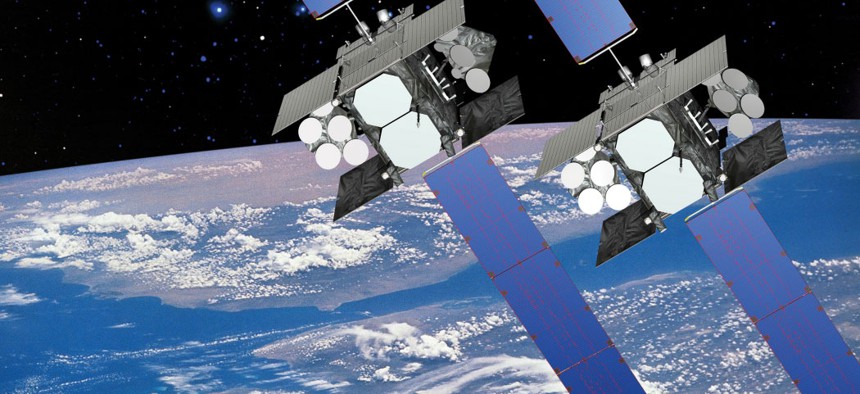
Army speeds up its battlefield satcom
The Wideband Global Satellite, accessible via portable terminals, delivers a 12-fold increase in communications.
The Army has been speeding up its global satellite constellation, designed to give soldiers quick access to global communications using portable equipment, into service.
The Wideband Global Satellite, or WSG-1, operates at 12 times of the speed of the legacy Defense Satellite Communications System. Users in the western Pacific recently transitioned to WSG-1 following six months of testing, the Army said in a release. DSCS, which has been in operation since the 1960s, with the latest versions launched in the 1980s and ‘90s, transmitted data at up to 200 megabits/sec. WSG-1 can send data, images and videos at 2.1 gigabits/sec to 3.6 gigabits/sec, representing "a quantum leap in communications capacity, connectivity and flexibility," the Army said.
The Army has been working on improving its satellite field communications for a while. WSG-1 was initially launched in 2007, and the service has been deploying small, portable satellite terminals. Two examples are the Global Rapid Response Information Package, or GRRIP, which was used in Afghanistan but only employed the L band in the satellite communications spectrum, and the Transportable Tactical Command Communications, or T2C2, which added the KA and X bands.
T2C2 has two versions: a larger dish that supported company-level operations and the smaller T2C2 Lite, roughly the size of carry-on luggage and which soldiers in the field could set up in about 10 minutes. Last year, the Army also said it had started using Ground Antenna Transmit & Receive, or GATR, systems, which are inflatable, 25-pound satellite antennas that can be quickly deployed in austere environments and connect to WSG-1.
The WSG satellite constellation provides board cross banding capabilities, allowing two-way X-band and Ka-band communications, and an X-band terminal to communicate with a Ka-band terminal, the Army said.